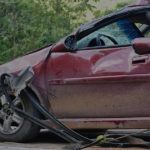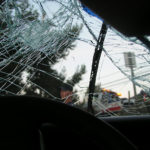Occupational Health and Safety legislation is in place to protect employees in the workplace. It mandates identification of all foreseeable safety hazards and controlling or eliminating all risks presented by these hazards.

Step One: Identify the Hazards
There are many mechanisms for identifying hazards and all should be in place. These include: routine inspections, incident reports, injury documentation, employee consultations and employee feedback. There are three main areas of concern for safety.
Purchasing
Many purchases of chemicals or equipment can introduce safety issues to the workplace. For example, caustic, toxic or flammable chemicals pose a safety risk, as do many pieces of equipment such as a food slicer or a power saw.
Work Activities
Many work tasks pose inherent risks, such as lifting, carrying, repetitive use strain or even sitting at a computer all day. Environmental factors such as air quality can pose risks, too.
Customers, Casual Employees or Contractors
Outsiders can come into your workplace and expose you to risk. Irate customers can represent a sizeable risk in the wrong circumstances. A contractor who is performing heavy duty cleaning tasks can expose you to dangerous chemicals.
Step Two: Assess the Risk
This is where the likelihood and seriousness of any effects represented by any hazard are determined. Factors to consider include: type of hazard, potential damages caused by the hazard, likelihood of damages, duration and frequency of exposure, employees who may be affected and the physical characteristics of the workplace.
Step Three: Control the Risk
Risk control is determining and executing what it will take to eliminate the risks posed by the hazards that have been identified.
Eliminate the Hazard through Redesign or Reorganisation
Use new systems, protocols or equipment instead of those which are hazardous.
Substitute or Remove the Hazard
The hazard can be removed or replaced by materials, substances or equipment that don’t represent a hazardous risk.
Isolate or Enclose the Hazard
Self-explanatory.
Engineering Controls
For example, a blade guard on a saw or meat slicer.
Protective Equipment
Hard hats and masks are two popular forms of protective equipment.
Step Four: Review
Review should be an ongoing process to ensure maximum safety.
Is Your Workplace Compliant?
If you have been injured in the workplace, call our compensation lawyers in Perth today: (08) 9316 2299.
















You must be logged in to post a comment.